With tech, farms can double up to produce both food and power
Such ‘agrivoltaic’ ventures find ways to share the sun between crops and solar panels
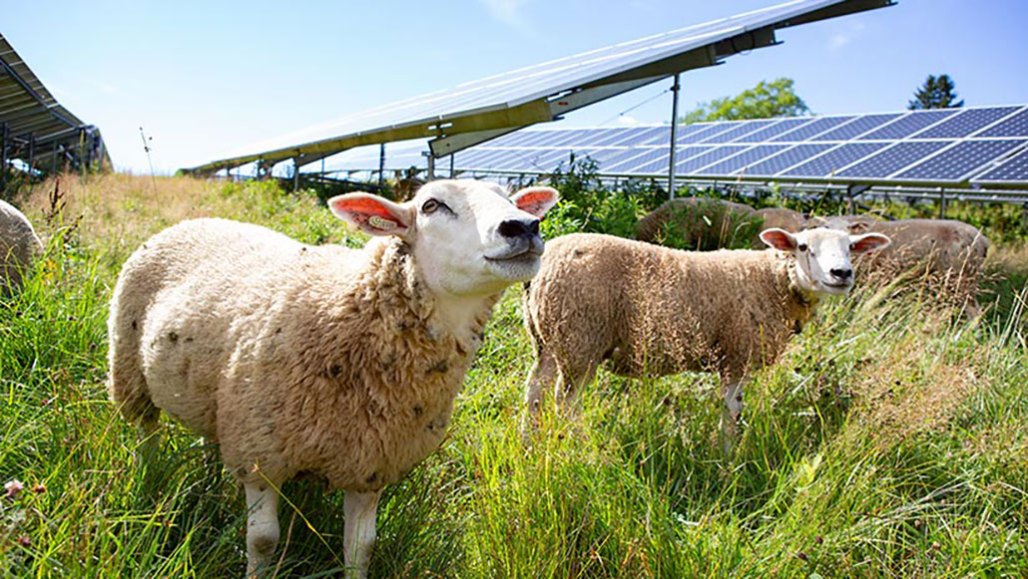
Agrivoltaic projects bring together farms and solar energy production. Photovoltaic panels can sit atop fields of forage grasses for livestock, such as these sheep.
Lexie Hahn/lightsource bp
Share this:
- Share via email (Opens in new window) Email
- Click to share on Facebook (Opens in new window) Facebook
- Click to share on X (Opens in new window) X
- Click to share on Pinterest (Opens in new window) Pinterest
- Click to share on Reddit (Opens in new window) Reddit
- Share to Google Classroom (Opens in new window) Google Classroom
- Click to print (Opens in new window) Print
Listen to this story:
Have feedback on the audio version of this story? Let us know!
This is another in our series of stories identifying new technologies and actions that can slow climate change, reduce its impacts or help communities cope with a rapidly changing world.
The state of Maine is famous for its delicious wild blueberries. They pack a burst of sweetness into a tiny purple package. And they grow everywhere. They thrive on barren mountaintops, in abandoned fields and along rural roadsides. They flourish where most other plants don’t. They also are decidedly native. They’ve been growing in this landscape for more than 10,000 years.
At David Dickey’s small farm in the coastal town of Rockport, farmers harvest blueberries. They’re also harvesting sunshine. A grid of solar panels stands a few feet above four hectares (10 acres) of his land. The electricity these generate powers a few hundred nearby homes. Under and around these panels are sprawling fields of the low, dense blueberry bushes.
Lily Calderwood knows more about wild blueberries than almost anyone. “They’re a good ground cover,” she says of the berry bushes. “And they can grow under a solar panel.”
At the University of Maine in Orono, Calderwood focuses on finding ways to grow better berries. Her work includes studying the berries and solar panels at Dickey’s farm. For example, how can the bushes be planted to produce delicious berries despite the shade cast by those panels?
Dickey’s farm is the first in Maine to combine berries with solar panels. It’s part of a “growing” trend. Around the world, farmers and solar companies are working together to merge farming with the production of electricity.
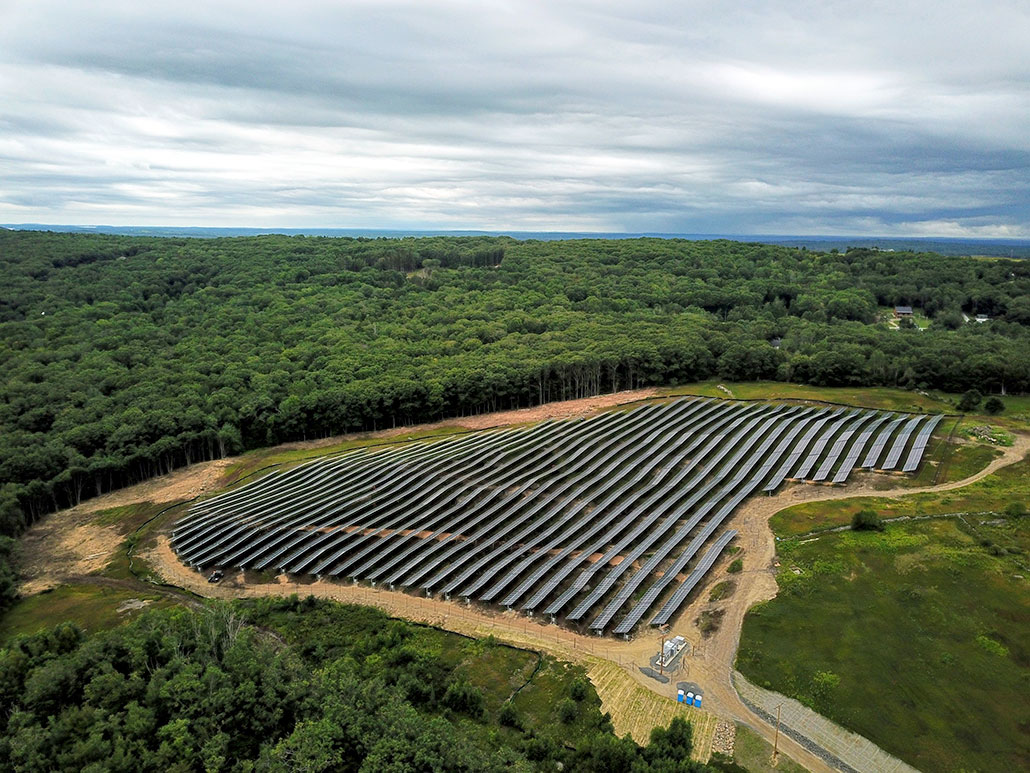
This concept is called “agrivoltaics.” (The word combines “agriculture” with “photovoltaics.” Photovoltaic materials — such as solar panels — generate electric current from sunlight.) The idea is to make the best use of the land.
Solar panels generate electric power without spewing the carbon dioxide and other greenhouse gases that fossil fuels release as they’re burned. Installing solar panels on farms helps solve another major problem: finding the space to collect enough sunlight to produce a bounty of electricity.
Farmers can help by sharing their land, says Jordan Macknick. An environmental scientist, he works at the National Renewable Energy Laboratory, or NREL. It’s in Golden, Colo. He’s part of a team there developing agrivoltaic projects at nearly two dozen U.S. farms. They range from coast to coast, north to south. Many more are underway around the world.
Growing crops requires hard work — often generating only a low income. Agrivoltaic projects can benefit farmers by giving them a second crop: electric power. Or, farmers can pick up some extra cash by leasing their land to power companies that will install their own solar panels on the site.
Although the idea behind agrivoltaics has been around for decades, interest among farmers has picked up only recently. Every week now, Macknick hears from farmers asking how to install solar power.
“Over the last few years, it’s really just exploded,” he says.
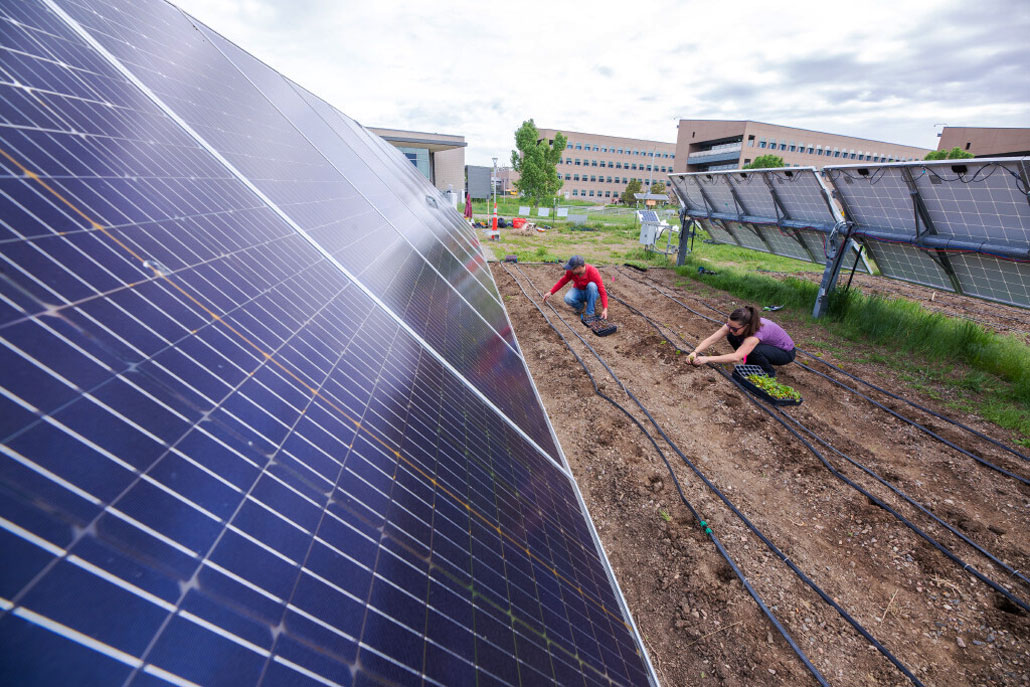
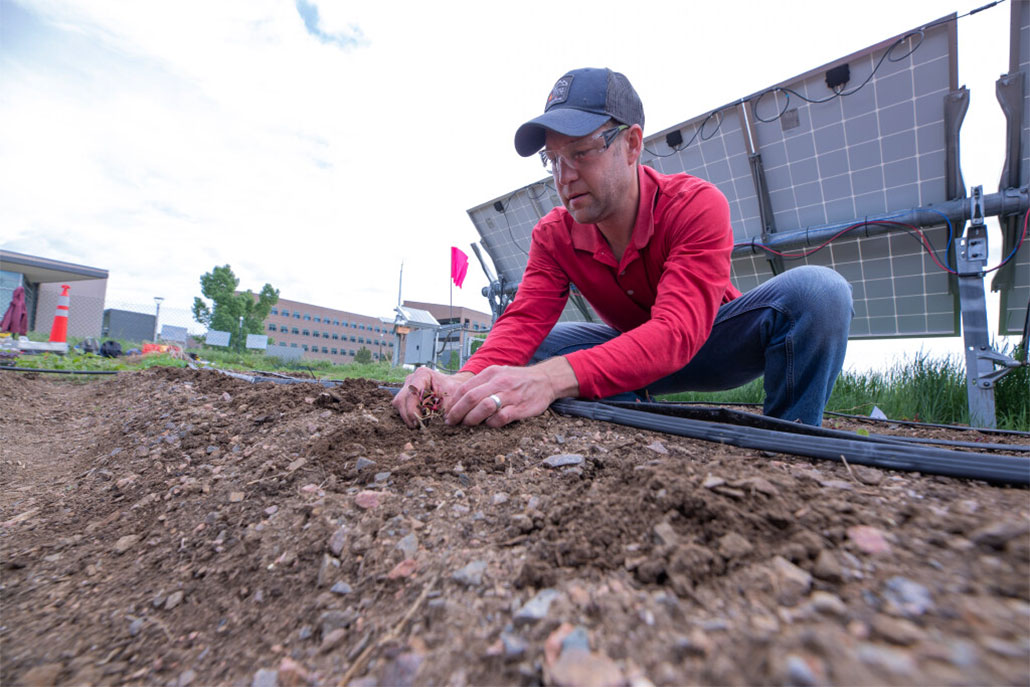
Fuzz and buzz and beyond
Not every farm can support panels, Macknick points out. It’s often not economically feasible. The trick, he says, is to identify those that can. Another is to learn which crops and livestock will flourish — and which won’t — around giant solar arrays.
Blueberries aren’t the only crop researchers want to pair with solar panels. One farm up Maine’s coast lets sheep roam around panels installed there. And it’s not alone.
Silicon Ranch, a company based in Nashville, Tenn., is installing solar panels at 17 farms with sheep. Their grazing keeps the grass low, which means no one has to mow. And Silicon Ranch is working with NREL at a farm in Georgia to install elevated panels. These let cattle pass below.
A winemaker in France has installed solar panels around grape vines. On a farm in southern Italy, solar panels offer valuable shade to fruit trees. Engineers in the Netherlands are testing the suitability of raspberries, strawberries, blueberries, black currants and blackberries at solar sites. In China, farmers have been growing goji berries on land where solar panels generate enough electricity to power hundreds of thousands of homes.
When it comes to agrivoltaics, one size does not fit all. Moreover, not all of these programs may earn a profit, at least not at first.
Some farms have solar installations but focus on crops. Others, like the fruit grower in southern Italy, use the solar panels for shade or to collect sunlight atop a greenhouse.
Still others take what Macknick calls the “fuzz and buzz” approach. They plant gardens of native flowers to attract bees, which can pollinate nearby plants. That’s the buzz. Then, at certain times of the year, they let sheep graze around these pollinator gardens. They’re the fuzz.
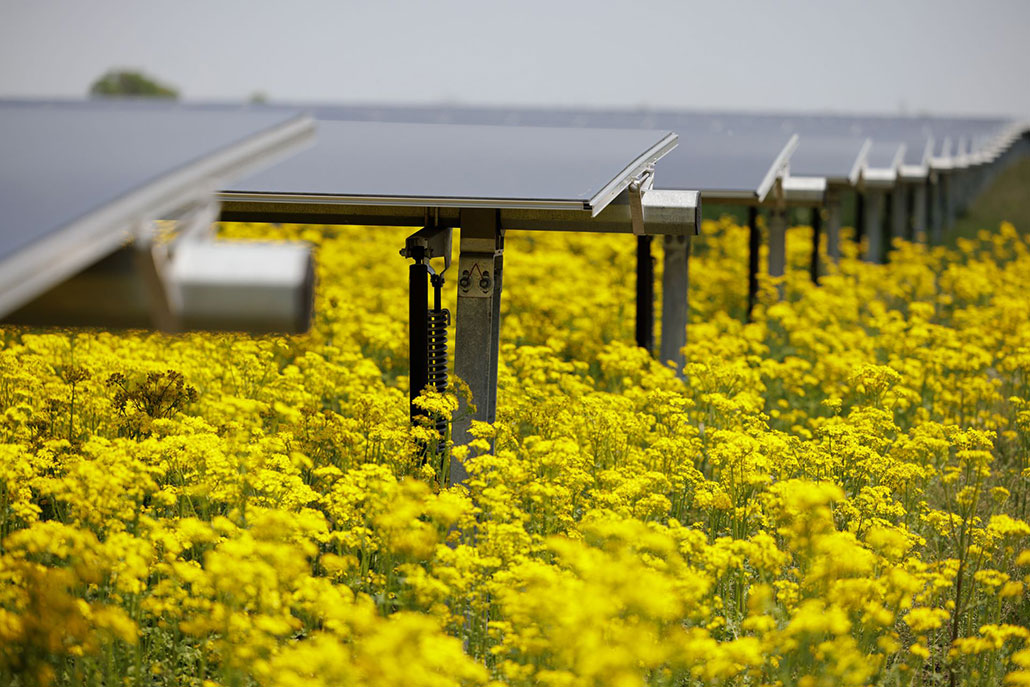
A big test site
Jack’s Solar Garden is the largest commercial research site for agrivoltaics in the United States. Its 3,276 solar panels can power 300 homes. About 45 minutes north of Golden, Colo., they’ve been generating electricity since 2020.
Farmers there have planted flowers and food on test plots. By working with scientists, they’re investigating how to maximize their yields of both food and electricity.
Allison Jackson works at the farm. A former science teacher, she now runs educational programs there. She explains to visiting students how the crops and panels coexist. Not all plants will grow in the shade, she points out. But many do.
In one project at Jack’s, she and scientists from the University of Arizona are studying 25 edible plants. Their goal: to investigate how shade from the solar panels affects plant heights — and if height also affects the quantity of food a plant produces.
The early results have turned up some surprises.
“Leafy greens get stressed by too much sun and too much heat,” Jackson notes. “So things like basil, lettuces, kale, Swiss chard — all those things love having extra shade.” The solar panels, she says, create a cool microclimate that helps these plants thrive. Other plants, like squash, need more sun than they can get beneath a panel.
Solar panels also change the way water reaches plants, Jackson reports. Overnight, dew forms on the underside of panels. In the morning, it falls on the plants below. That can help water the plants. But they can also receive too much: When it rains, runoff from the panels can pool in lines along the garden. Calderwood says excess water can exaggerate the threat of some plant diseases.
Researchers are studying how all of these factors affect the health of crops. Ultimately, Jackson says, these studies should point to the best height and spacing of edible plants below solar panels.
This year, for the first time, Jack’s launched a Community Supported Agriculture program, or CSA. Neighbors buy shares of the harvest and pick up their food every week. “We’re the first agrivoltaic CSA in the country,” Jackson boasts.
Learning to share the sun
According to a recent NREL report, the United States would need about 4 million hectares (10 million acres) of solar panels to meet the country’s demand for electricity. That’s a lot of land — about half the size of the state of South Carolina.
Across the country, solar companies are racing to build new arrays of those panels. And they’re building big.
Meta, the tech company that owns Facebook and Instagram, is working with Silicon Ranch to build solar farms in Georgia and Tennessee. These panels will produce all of the electricity Meta uses in this region. At some of those farms, Macknick of NREL is helping to plan the integration of sheep or crops.
But agrivoltaic projects are new and experimental. Researchers are still trying to find the best way to build them.
At some sites in Georgia, for instance, engineers are building high panels that rotate to follow the sun. But if they rotate too far and are too close to the ground, cattle can’t move past without nudging the panels. And if they’re too tall, the soaring cost of steel — used to support the panels — might make them too costly to let farmers make a profit, Macknick says.
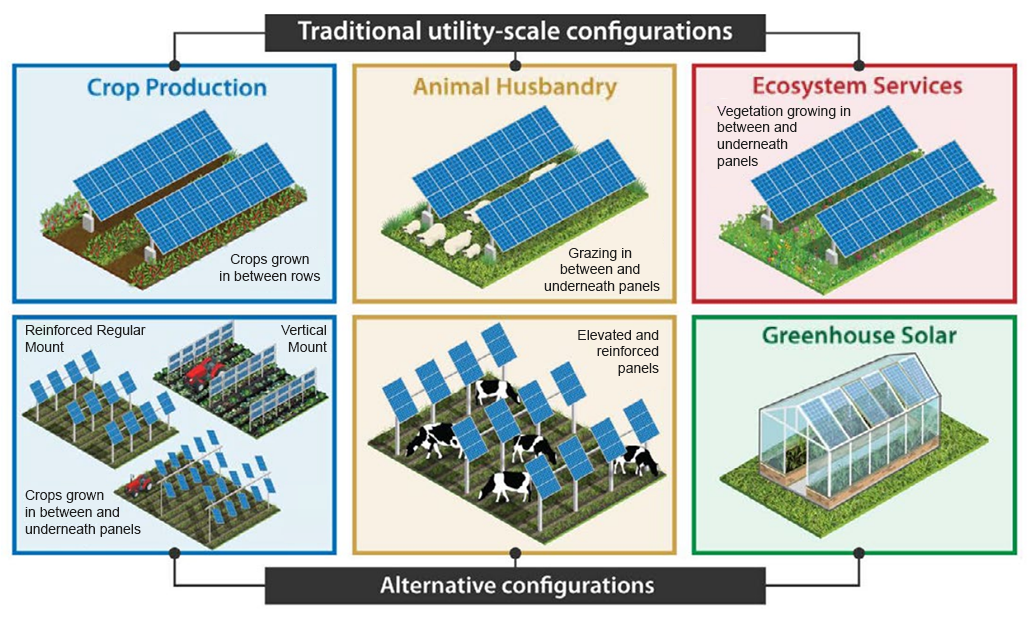
Each farm, crop and local climate combo is different. So researchers need more information before they feel confident about the best systems, says Calderwood, in Maine. “Right now, it’s an experiment,” she notes. For instance, it’s not yet profitable for a farmer to combine solar and blueberries.
Wild blueberries mature over a two-year cycle. A few months after farmers harvest a crop in late summer, they burn or prune the bushes. The next year, the bushes grow without producing fruit. Only the year after that will the bushes again bear fruit.
In 2022, a year after the first solar panels were installed, Calderwood and her team studied tall-bush blueberries planted in one field at Dickey’s farm. These plants can grow more than two meters (six feet) high. The results weren’t good.
Very few berries grew. “There’s about 80 to 90 percent shade under the panels,” she says. “And blueberries can withstand [only] about 30 to 50 percent shade.”
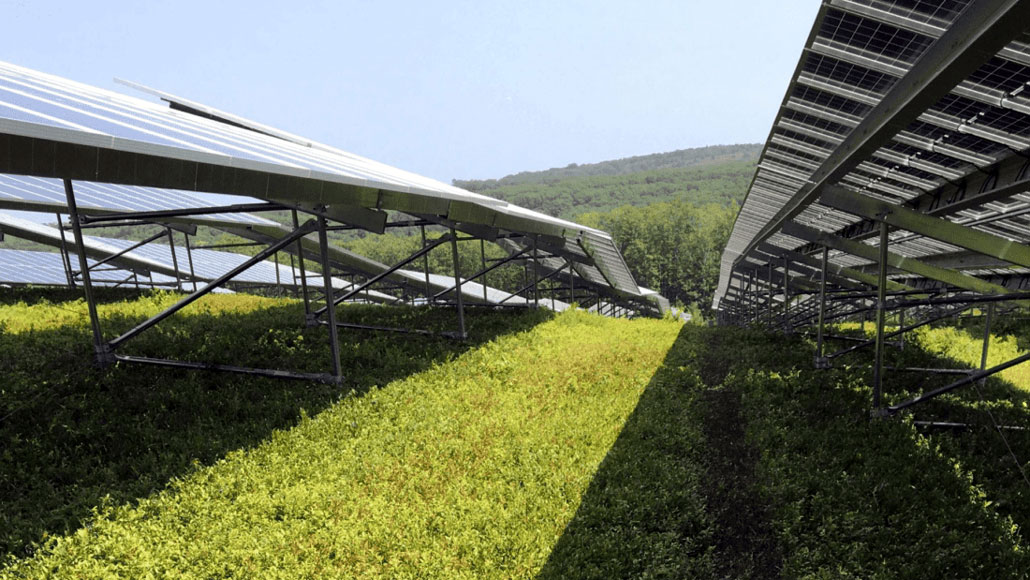
She’ll be studying low-bush blueberries in a different field, next year. “When we have the next crop, we can collect more data,” she says. She’ll study the temperature, humidity and sunlight there. And already Calderwood is optimistic. This past summer, the shorter blueberry plants beneath the panels looked “really good,” she reports.
That could be because the builders were more attentive. When those newer panels were installed, she says, the workers put mats over the ground for protection. They were more careful about where they drove. (Heavy machinery can compact the soil, making it harder for plants to grow there.)
Macknick, at NREL, agrees. “You can’t,” for example, “drive your service truck where you’re trying to grow tomatoes.” He says that planning may be the most important factor in successfully combining agriculture with solar panels. “Soil management is so important,” he notes.
Set priorities: crops vs electricity
One thing is clear, Calderwood says: Farmers must decide what they want before they start building. “Do they want to put in [a solar] array and farm beneath it? Or farm first, and put solar over it?” If farming is the main priority, she says, then the solar panels may need to be spaced farther apart and possibly be raised higher. Such changes could potentially limit how much electricity those farm fields generate.
And agrivoltaic planners may need to treat the soil, Macknick says. They might want to break up the ground. And they may need to add nutrients (such as with compost) a year or two before construction starts. “You can’t rush it,” he explains. “You can’t build right away and then plant things.”
Emerging data, he says, show that even as the solar panels go in overhead, farmers must protect the natural processes that help plants grow.
“That can do a lot of good,” he says. “Otherwise, it’s really hard to cheat nature.”







